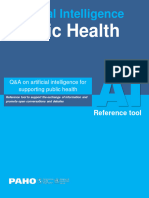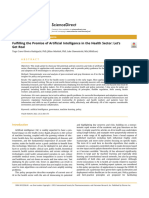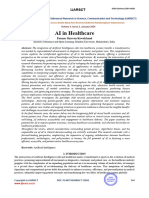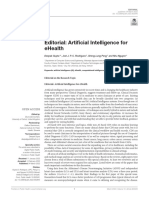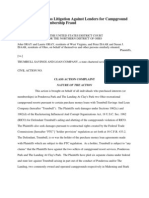0% found this document useful (0 votes)
67 views18 pagesModified Evs Report
This report examines the transformative role of artificial intelligence (AI) in public health, highlighting its applications in disease surveillance, health diagnosis, personalized medicine, and resource allocation. It discusses the benefits of AI, including improved healthcare access, enhanced diagnostic accuracy, cost efficiency, and faster decision-making, while also addressing challenges related to data privacy, algorithmic bias, and ethical considerations. The report emphasizes the need for careful management of these challenges to ensure equitable and effective use of AI in healthcare systems.
Uploaded by
quber.bbCopyright
© © All Rights Reserved
We take content rights seriously. If you suspect this is your content, claim it here.
Available Formats
Download as DOCX, PDF, TXT or read online on Scribd
0% found this document useful (0 votes)
67 views18 pagesModified Evs Report
This report examines the transformative role of artificial intelligence (AI) in public health, highlighting its applications in disease surveillance, health diagnosis, personalized medicine, and resource allocation. It discusses the benefits of AI, including improved healthcare access, enhanced diagnostic accuracy, cost efficiency, and faster decision-making, while also addressing challenges related to data privacy, algorithmic bias, and ethical considerations. The report emphasizes the need for careful management of these challenges to ensure equitable and effective use of AI in healthcare systems.
Uploaded by
quber.bbCopyright
© © All Rights Reserved
We take content rights seriously. If you suspect this is your content, claim it here.
Available Formats
Download as DOCX, PDF, TXT or read online on Scribd
/ 18





